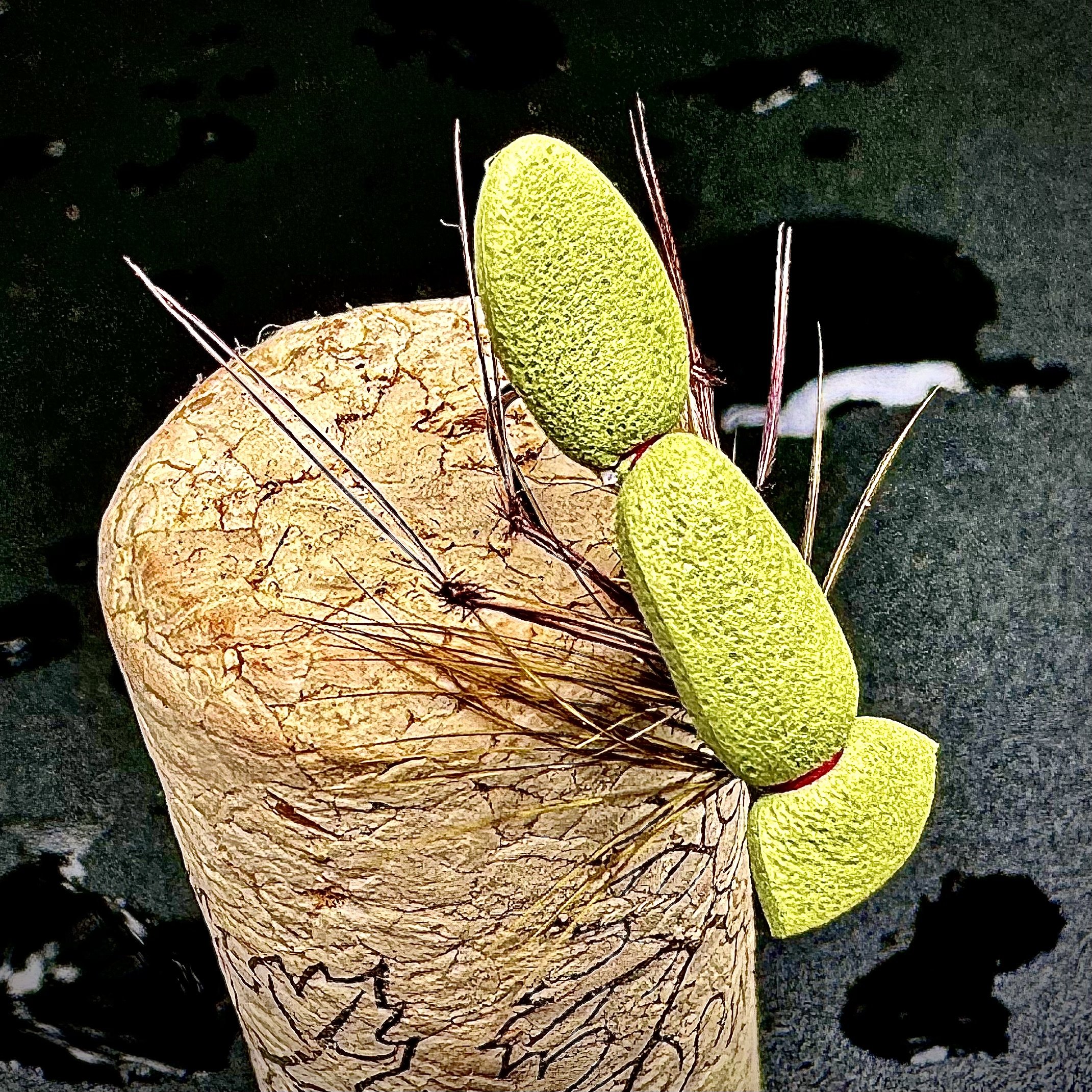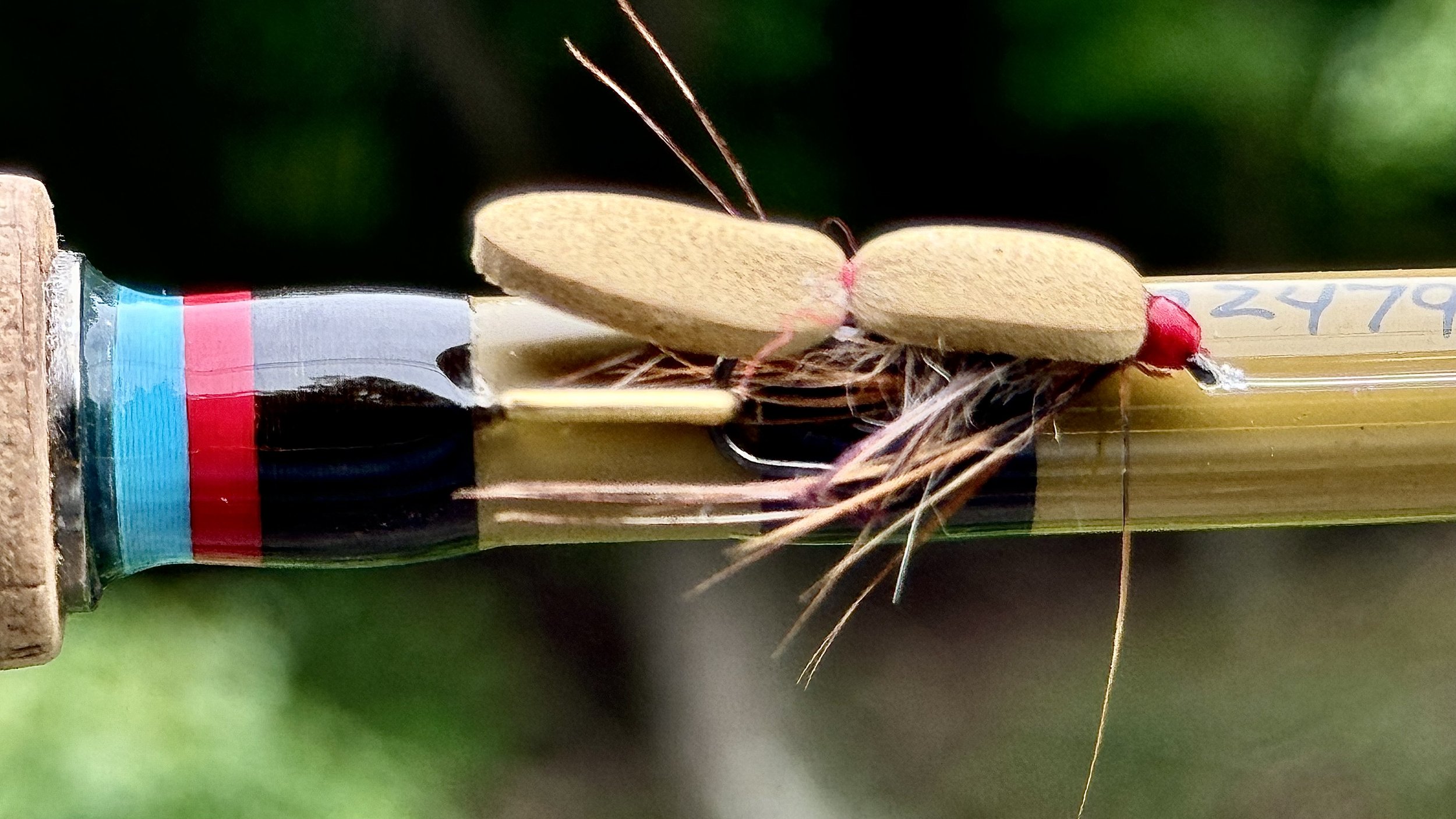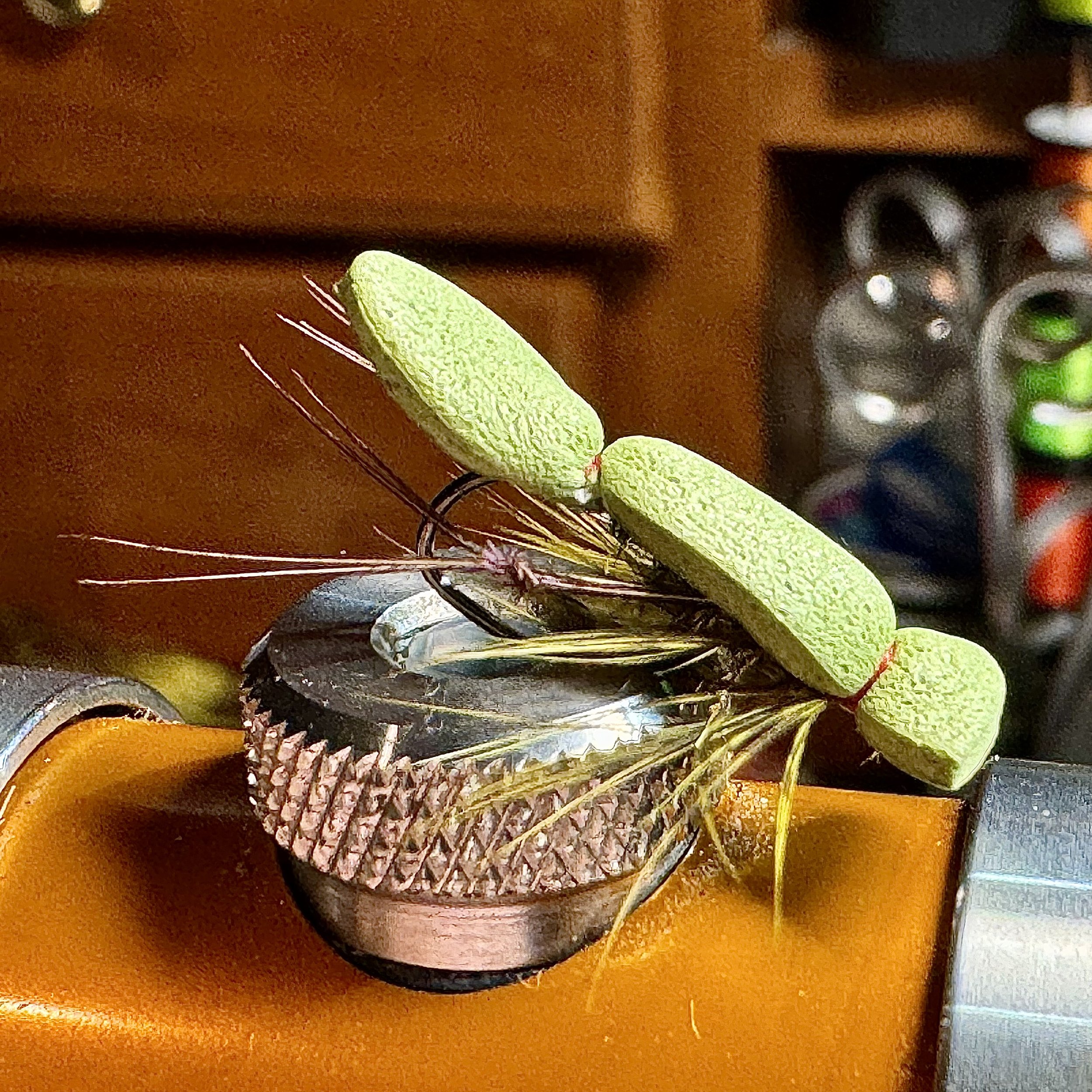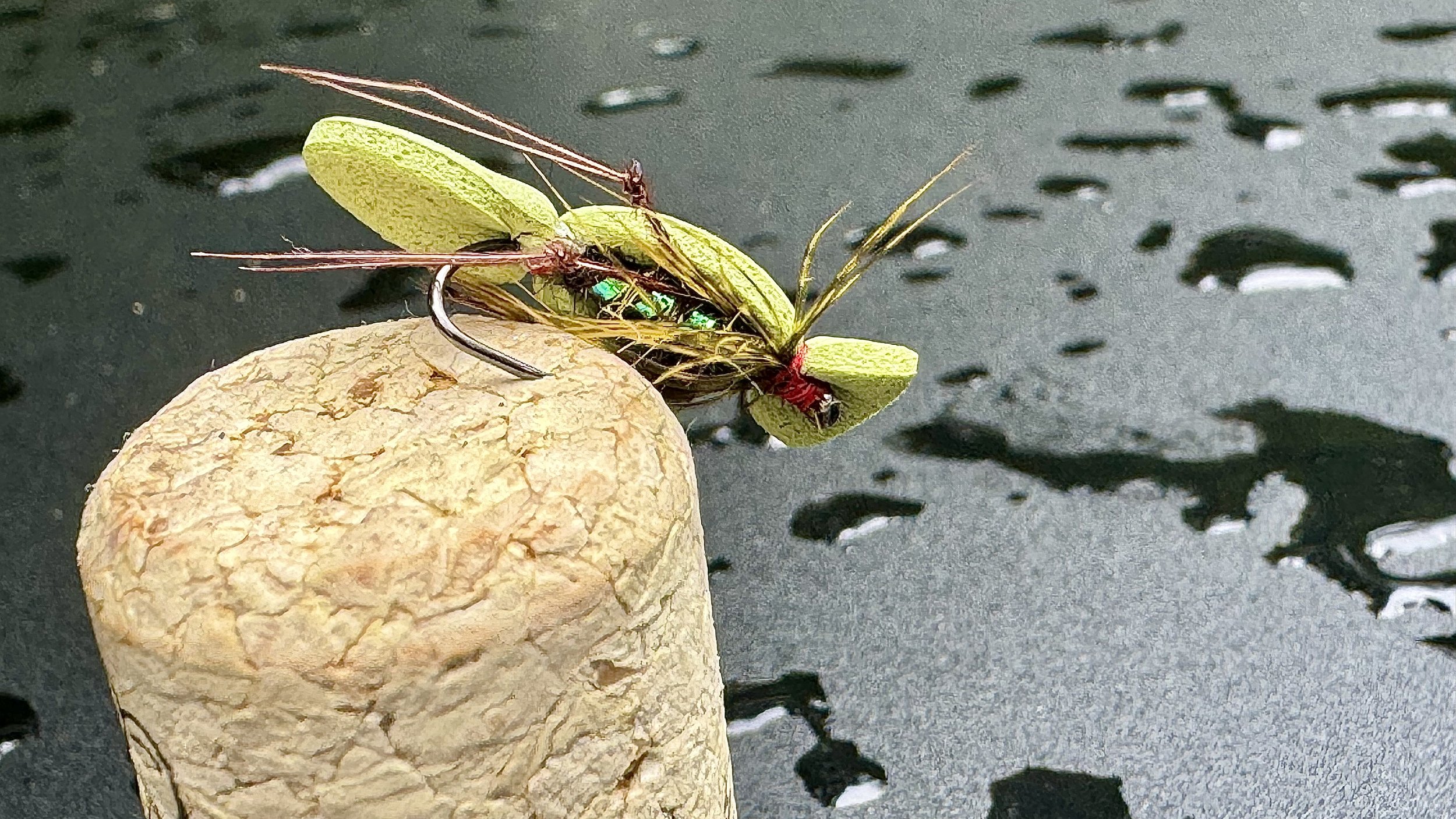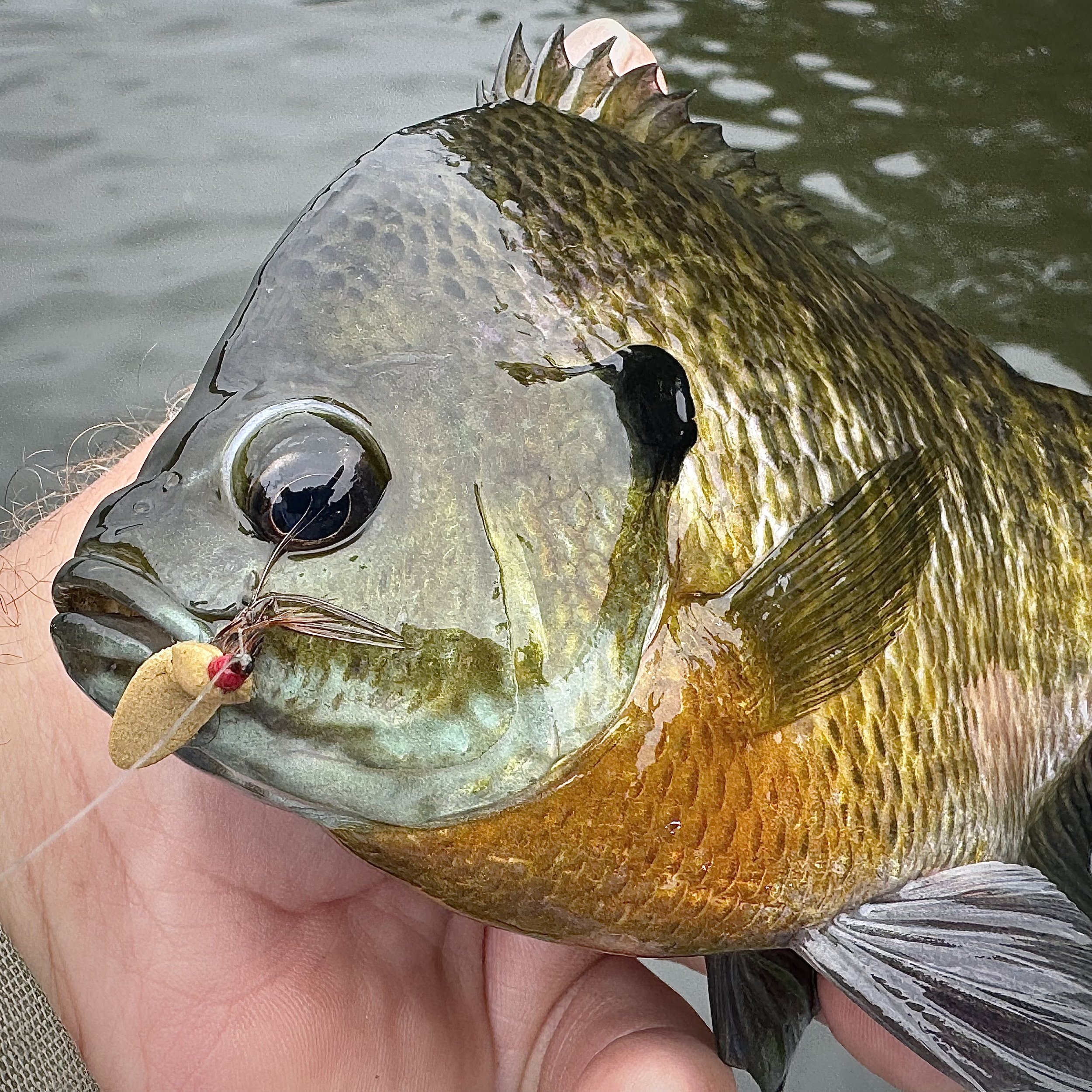For the past few years, I have had an obscure fly pattern, first developed by British anglers, in my panfish fly box. The fly is called a Flat Daddy and imitates an adult cranefly. While craneflies find their way onto my local panfish lakes and fish do eat them, they are not a common occurrence. I fish the Flat Daddy as a generic, buggy-looking terrestrial pattern. It doesn’t look like anything in particular, and I don’t even think it represents a cranefly that well, although the fish would argue that point! But it has all the right stuff regarding a topwater terrestrial pattern for panfish. It floats in the water instead of on it, is very buggy looking, and the knotted pheasant tail legs and soft hackle collar provide just enough fish-attracting movement. The little bit of flash in the underbody is an attractant as well.
The original Flat Daddy.
The original Flat Daddy is the perfect fly for spooky, shallow-water panfish. It lands lightly on the water and can be cast easily with two and three-weight rods. The fly has a very subtle action on the water, diving slightly when retrieved without creating a lot of disturbance that may spook fish in the shallows. It is the perfect early spring topwater fly pattern.
Be leaving a lip on the fly it creates a tiny gurgler pattern that panfish can’t resist!
Fast-forward to mid-summer, the fish have left the shallows and are now holding in deeper water. You need to get their attention to bring them to the surface now. Enter the Flat Daddy Gurgler. By leaving a foam lip on the pattern, it moves more water when twitched, creating a larger disturbance on the water’s surface. The extra foam increases the fly’s floating ability, but it still sits low in the film, allowing you to hang a wet fly or lightly weighted nymph off the back. The fly retains its lightness and can be cast on any fly rod. If you are an ultralight enthusiast, this fly will cast well on your lightest fly rod.
A Flat Daddy Gurgler in olive with a peacock dubbing underside.
I tie the fly on a Firehole 839 in sizes 12 and 14. The 839 is a streamer hook with a 3x-long shank and an extra-wide gap. The heavy wire hook makes the fly sit low in the water, providing extra strength when that bass comes along and eats your panfish fly. If you can’t find this hook, a long shank dry or nymph hook will work well for this fly.
The holographic tinsel rib adds a little flash to the underside of the fly.
You can tie the fly with a simple strip of foam the width of the hook gap and round out the tail with scissors. To streamline the tying process and produce a fly with a more finished appearance, I use a Chernobyl Ant Foam Cutter with a tapered end to create perfectly sized strips of foam with a tapered, rounded end. The fly can be tied in a wide variety of colors, my favorites being tan, olive brown, black, and yellow. I use various colors of dubbing for the underbody with a holographic tinsel rib. The knotted pheasant tail legs look super buggy, and the soft hackle collar adds color and movement to the pattern.
While the original Flat Daddy is a great panfish pattern, the gurgler version is more effective when fish are holding in deeper water.
Pattern Recipe:
Hook: Firehole 789 sizes 12 and 14
Thread: Semperfli Classic Waxed 6/0 Red
Tail and Body: Strip of 2mm foam (width of the hook shank/one end rounded)
Rib: Small or medium holographic tinsel
Underbody: Brushed out dubbing in color to compliment or contrast foam body
Legs: Four to six knotted pheasant tail legs
Hackle: Hen or game bird body feather
Tip: Using a tapered-end Chernobyl Ant Body Foam Cutter creates a perfect body for this fly pattern.
Tying Instructions:
1. Lay down a base layer of thread.
2. Tie in a foam strip at the bend. The tail should be a shank length long, with a rounded end hanging off the back of the hook.
3. Tie in holographic tinsel rib.
4. Apply dubbing to thread and wrap forward, stopping a hook eye length from the front of the hook.
5. Brush out dubbed body.
6. Wrap tinsel forward in open turns and tie off.
7. Select four to six knotted pheasant tail legs and tie them equally distributed on each side of the hook.
8. Tie in a body feather from a hen or game bird in the color of your choice and wrap around the hook shank, sweeping fibers rearward with each turn.
9. Fold the foam strip forward and tie it off at the hook eye.
10. Lift the foam strip, build up a small head underneath the foam, and whip finish.
11. Cut the foam strip a short distance from the hook eye to create the gurgler lip.
12. Coat thread wraps with UV Resin or head cement if desired.
